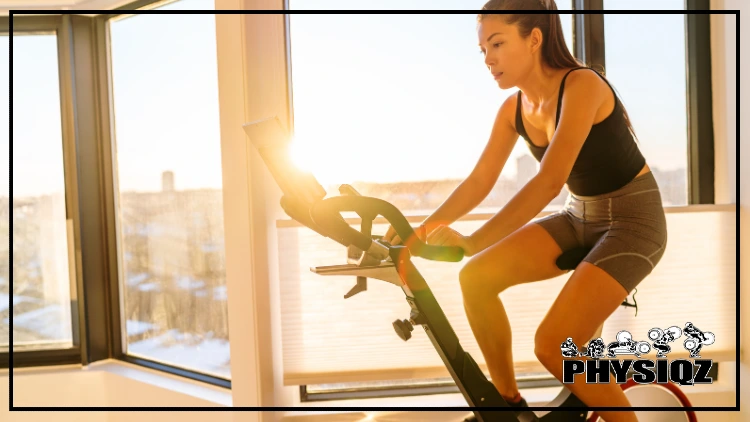
You might wonder which muscles Peloton targets.1
Peloton indoor cycling classes primarily workout the muscles in the lower body, but knowing how each muscles works can help you focus on targeting a certain one, or explain why you’re sore in places you never thought possible!
We’ll also cover the muscles worked in every Peloton class, the mental and physical benefits of spin class, and before and after weight loss pictures that will leave you inspired to hop on the saddle.
Is Spinning an Effective Form of Exercise? Does Spin Provide a Good Workout?
Riding a bicycle is fun at all ages, but not everyone knows if bike based workout classes, or better known as spin classes, are a great workout.
Turns out, it is! Spin classes are great for getting the heart rate up, aids in the burning of fat, can help to harden muscles, and is overall very healthy for the body.
Furthermore, most spin classes tend to fall into the category of high intensity interval training, or HIIT for short. This is a form of exercise that requires participants to do a high intensity cardio activity for a short period of time, with lower intensity “breaks” in between.
The result is a really good workout that helps to boost the metabolism and burn troublesome body fat.
Ultimately, spin classes are a great workout that burns calories, increases muscles, and improves overall health. In fact, research suggests that indoor cycling is helpful in weight loss as well as cardiovascular health, making it an ideal cardio based workout to incorporate.2
Peloton Targets Which Muscles? What Muscles Does Spinning (Indoor Cycling) Work?
When it comes to the question of which muscles Peloton targets during spin classes, the answer is quite a few and even more so since there’s a variety of classes.
But before getting into each class, check out the complete list below for a detailed review of each muscle targeted during Peloton cycling classes.
The Glutes or Buttocks: Gluteus Maximus, Medius, & Minimus
Commonly referred to as the glute muscles, these three muscles are located in the buttocks region and are constantly engaged during Peloton spin classes.
They aid in the generation of power during each cycle rotation. To engage these muscles more intensely, increase the resistance level on the Peloton bike to enhance glute strength and muscle development.
Gluteus Maximus
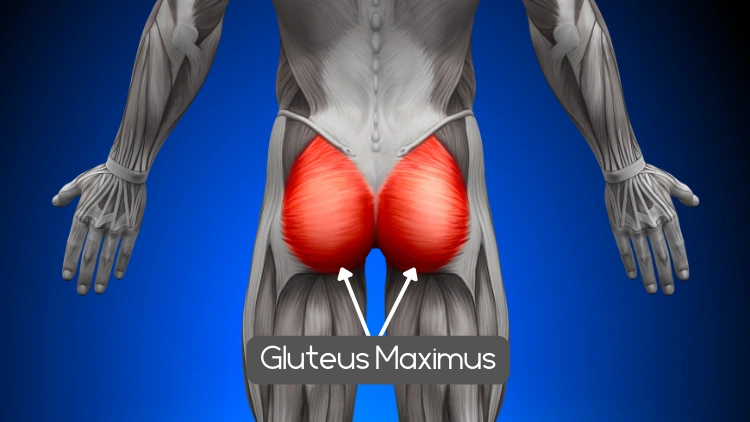
Source: decade3d via Canva.com3
Gluteus Medius
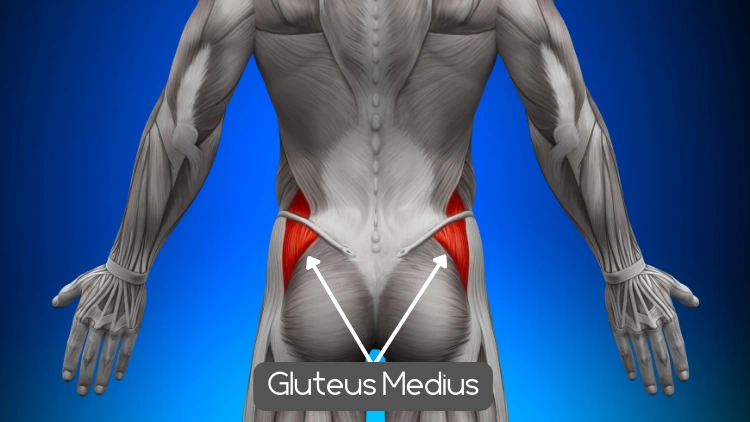
Source: decade3d via Canva.com4
Gluteus Minimus
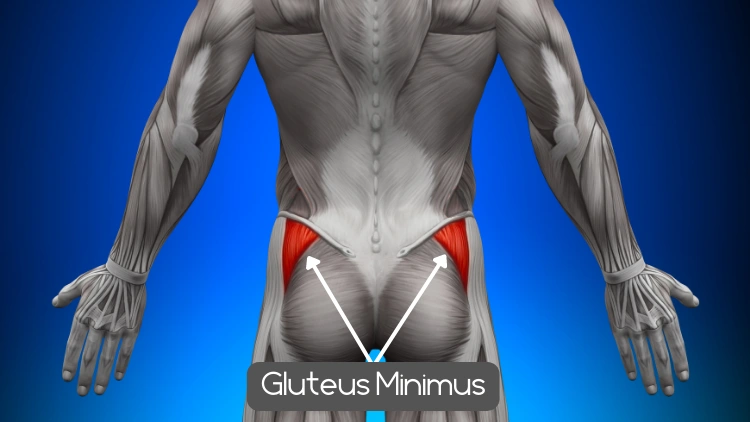
Source: decade3d via Canva.com4
Upper Thighs: Quadriceps & Hamstrings
Similar to the glute muscles, the quadriceps or “quads” and hamstring or “hammies” are constantly being targeted during Peloton spin classes. They are responsible for leg extension (quadriceps) and leg flexion (hamstrings), which is a movement consistently used in spin classes to help peddle the bike.
To increase the workload for these muscles, simply increase the weight or level on the bike. This can turn a normal spin class into a killer lower body workout.
Quads
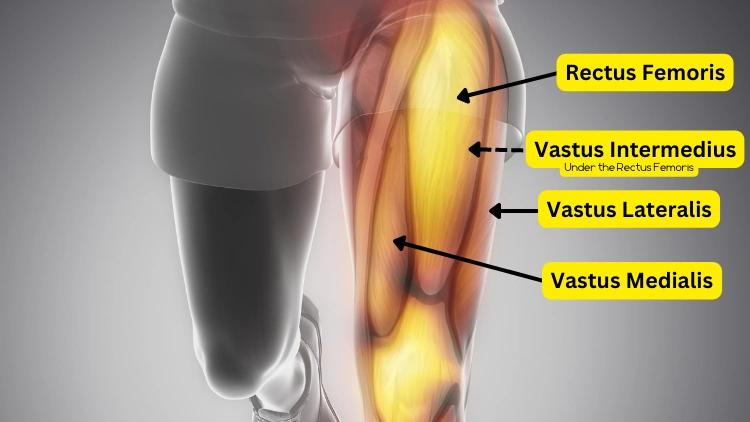
Source: janulla via Canva.com5
Hamstrings
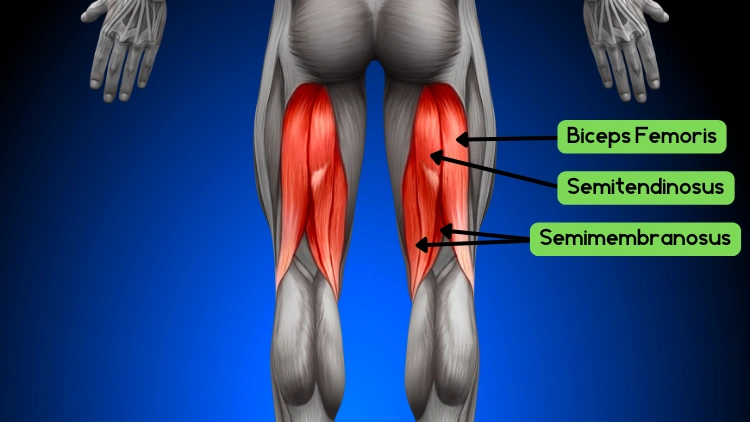
Source: decade3d via Canva.com6
Calves: Gastrocnemius & Soleus
The gastrocnemius and soleus are the two muscles that are known as the calves and are one of the lesser known muscles when people ask which muscles Peloton targets. They are responsible for foot flexion and extension, and will be engaged during spin classes during pedaling– even more so when standing and pedaling.
Although these muscles will be consistently engaged during a Peloton class, it’s important to keep in mind that these muscles will not be worked as significantly as the buttocks and upper thigh muscles.
Gastrocnemius
Soleus
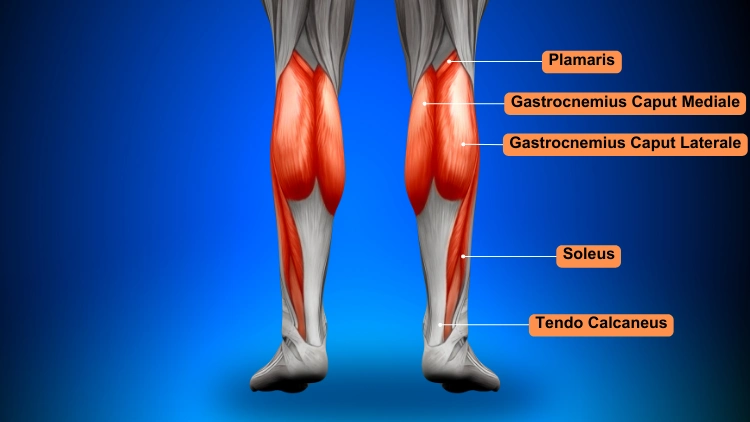
Source: decade3d via Canva.com7
The Core & Lats: Abdominals & Latissimus Dorsi
Most people don’t consider the amount of work the abdominals and back will get during a cardio based spin class. But keep in mind a tight core is critical during spin classes.
These muscles will constantly be engaged during a Peloton spin class to help keep a rider in an upright position on the bike. Furthermore, these muscles are targeted when engaging in different movements and riding positions during the class itself.
Abdominals
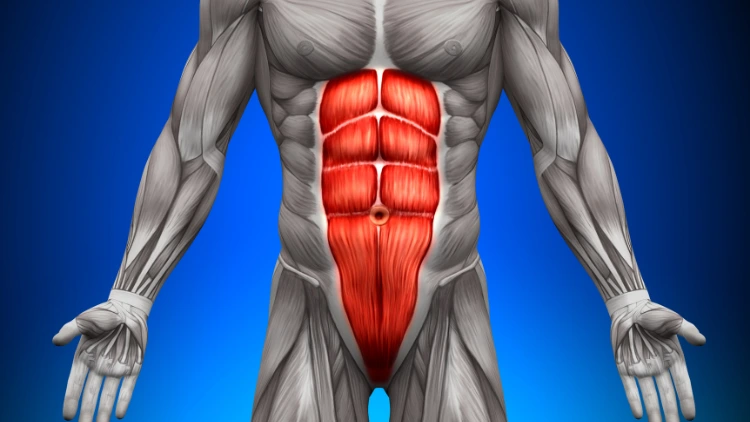
Source: decade3d via Canva.com8
Lats
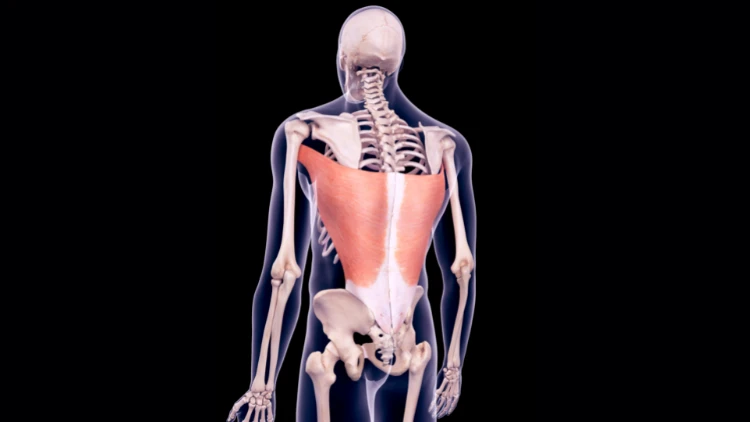
Source: Science Photo Library via Canva.com9
Chest, Shoulder, & Upper Arm Muscles: Pecs, Deltoids, Biceps, & Triceps
Not all spin classes engage the upper arm and shoulder muscles. However, Peloton does offer a number of spin workout classes that use light weights and movement variations to help engage the upper body.
So when using a Peloton spin class that is engaging the upper body too is a great way to build muscle and strength in the arms while also burning a significant amount of fat from high intensity cardio.
Pecs
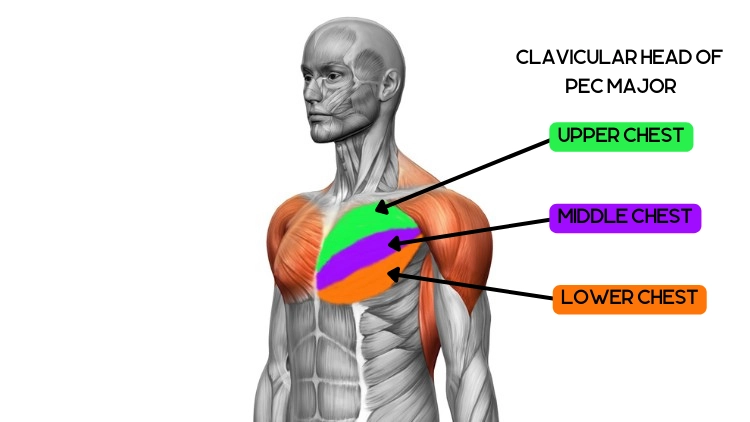
Source: Science Photo Library via Canva.com10
Delts
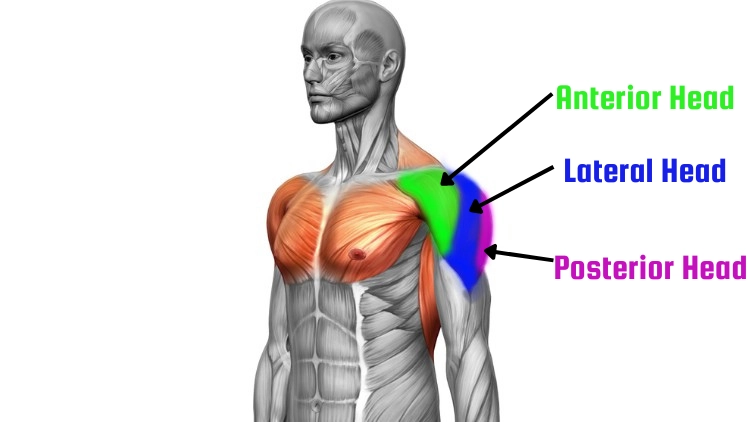
Source: Science Photo Library via Canva.com10
Triceps
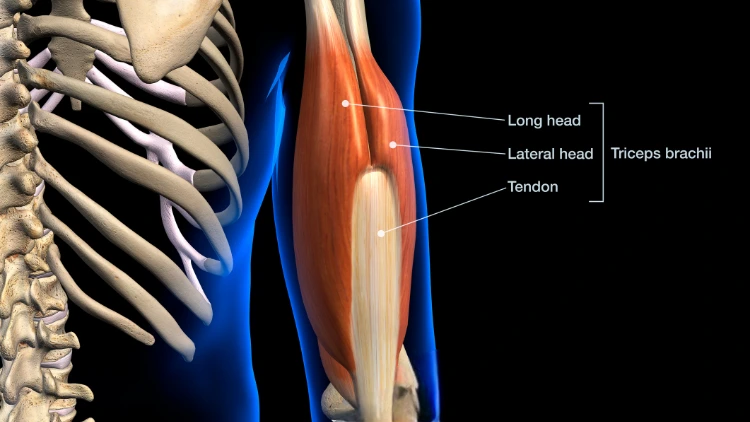
Source: Hank Grebe via Canva.com11
Do Different Peloton Classes Work Different Muscles?
Peloton classes range from cycling, yoga, strength, to things like boxing and dancing so each class works a different set of muscles and their meditation classes even “work your brain”. That being said, here’s each Peloton class and the muscles worked.
Muscles Worked by Class in Peloton Workouts (Peloton Muscles Worked by Class)
Other than Peloton cycling classes, there are a variety of classes that engage different muscles than others, especially when exploring different workout programs.
So the answer to which muscles peloton targets is that it really varies depending on the class and needs of the individual working out.
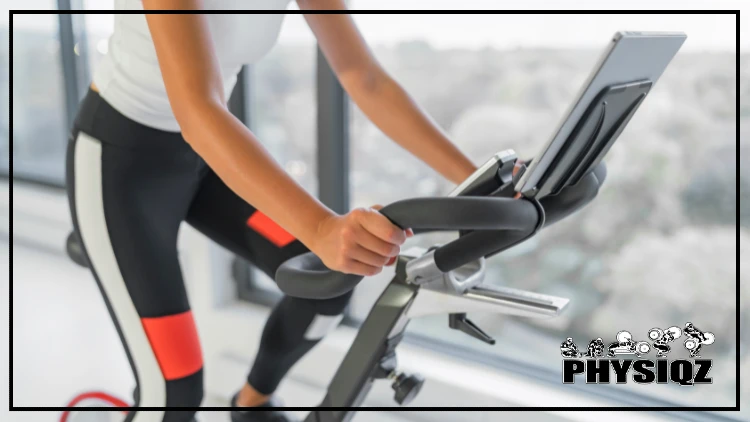
Source: Maridav via Canva.com12
Readers are encouraged to explore the list below to better understand the muscles targeted by different peloton programs. Not only will this help fitness minded individuals to find their best peloton workout class match! It can also aid in finding variation in workouts to prevent burn out and hit many different muscle groups.
Our personal favorite is their strength classes because the Peloton strength before and after results provide a full body recomposition rather than just focusing on the lower body like the cycling classes.
Peloton Strength Muscles Worked
Biceps, Triceps (Upper Arm Muscles) These muscles are found in the upper arm and are targeted during Peloton classes to help build muscle and strength.
Deltoids (Shoulder Muscles) The shoulder muscles are engaged during Peloton through exercises such as front and lateral (side) raises, or through weighted overhead presses.
Pecs (Chest Muscles) These muscles are engaged during any forward movement of the arms. The Peloton strength based class will engage this muscle with exercises like chest presses and push ups.
Latissimus Dorsi, Trapezius, Rhomboids (The Back Muscles) These are commonly referred to the “lats” and “traps” respectively. There are many muscles in the back, but the primary ones that are engaged during strength Peloton classes are the ones above. Classes may include rowing exercises or deadlift workout variations.
Abdominals (Core) When it comes to building strength, targeting the core muscles is key. Not only will this improve muscle, but can also increase ab visibility when paired with healthy dieting and fat burning.
Glutes (Buttocks) The glutes are very important to target and will be engaged during many strength Peloton classes.
Hamstrings, Quadriceps (Thigh Muscles) The thigh muscles are engaged during many of the same exercises that target the glutes. Lower body and full body Peloton classes will engage these muscles to aid in strength building.
Calves Peloton strength classes will engage the calf muscles when targeting lower body exercises.
Muscles Worked in Peloton Boxing
Pecs (Chest Muscles) Forward motion punching used in boxing engages the muscles of the chest.
Biceps, Triceps (Upper Arm Muscles) The bis and tris will be engaged during the punching motion during Peloton boxing classes.
Deltoids (Shoulder Muscles) The deltoids and other shoulder girdle muscles will be engaged during boxing blows.
Latissimus Dorsi, Trapezius, Rhomboids (Back Muscles) These muscles are key for rotational movement to aid in boxing footwork and punches. So expect to engage these muscles during this peloton class.
Abdominals (Core) A tight core is key for boxing, so expect the abdominals to be one of the muscles worked during this Peloton class.
Glutes, Hamstrings, Quadriceps, Calves (Lower Body/Leg Muscles) Boxing requires a lot of jumping, quick movement, and power generation from the lower body. So the lower body muscles will be very engaged during this Peloton class.
Peloton Meditation “Muscles” Worked
Brain: The brain isn’t technically a muscle, it’s an organ. However, for the best health outcomes, it still needs to be “worked out” in a sense. Research shows that consistent meditation improves emotional regulation skills, increases attention, and improves memory.13
Muscles Worked Running, Walking, Hiking, & Cardio With Peloton App
Glutes, Hamstrings, Quadriceps, Calves (Lower Body/Leg Muscles): All three programs involve the engagement of all the muscles of the legs. Running Peloton classes is a great way to target the lower body and get great cardio, while walking can provide engagement with lower impact for those with joint pain.
Abdominals and Back (Core) A tight core to keep an ergonomic walking, hiking, and running position is key. So expect the core to be engaged during this workout.
Peloton Yoga Muscles Worked
Pecs (Chest Muscles) Yoga engages the chest during floor work, such as active weight bearing poses. It will also aid in opening the chest muscles.
Biceps, Triceps (Upper Arm Muscles) The upper arms are engaged during floor work, as well as stretched thoroughly.
Deltoids (Shoulder Muscles) The shoulders are engaged during floor poses, as well as utilized for overhead stretching poses.
Abdominals and Back (Core) Yoga engages the muscles of the core, especially when completing slow and controlled movements to change poses.
Glutes, Hamstrings, Quadriceps, Calves (Lower Body/Leg Muscles) Depending on the specific yoga class, the lower body muscles will be engaged to complete active poses as well as to target hip and leg flexibility.
Rowing Muscles Worked on Peloton
Latissimus Dorsi, Trapezius, Rhomboids (Back Muscles) Rowing is the ideal exercise to target the muscles of the back.
Deltoids, Biceps, Triceps (Shoulder and Upper Arm Muscles) These muscles will all be engaged secondary to the back due to the movement required during the row.
Hamstrings, Quadriceps (Thigh Muscles) These muscles will be targeted due the leg extension and flexion completed during this exercise.
Abdominals (Core) The abs will be engaged during rowing to help stabilize the body for an upright, ergonomic sitting position. A tight core is required for the movement involved in this exercise.
Peloton Pilates Muscles Worked
Abdominals and Latissimus Dorsi (Core) Pilates is well known to target the core and will use a number of core centric exercises.
Glutes, Hamstrings, Quadriceps, Calves (Lower Body/Leg Muscles) Pilates will also actively engage the leg muscles to engage in a number of exercise movements.
Pecs, Deltoids, Biceps, Triceps (Chest, Shoulder and Upper Arm Muscles) Pilates can engage the upper body through a number of movements, particularly with exercises engaging in weight bearing on the floor and even light free weights. Those with bad shoulder genetics shouldn’t worry, because pilates is low impact on the shoulder muscles and very much core focused.
Peloton Barre Muscles Worked
Abdominals (Core) Barre requires a tight core, so expect for this muscle to be engaged throughout the session.
Glutes (Buttocks) Barre is very lower body centric. The muscles located in the buttocks will be targeted with many of the movements used in this workout program.
Hamstrings, Quadriceps (Thigh Muscles) Much like the glutes or buttocks muscles, the thigh muscles are engaged during Barre due to the lower body movement required.
Calves Barre will involve many exercises that require participants to stand on the balls of the feet or toes. Due to this, the calves will be actively engaged.
Muscles “Worked” in Peloton Stretching Classes
Any muscle can be targeted during Peloton’s stretching program, depending on the workout selected. Studies show stretching improves muscle force, stiffness, and of course, flexibility.14 It’s important to understand that stretching is more passive engagement rather than active activation required for muscle building.
Is Spin Class Effective for Weight Loss? Can Spin Class Contribute to Weight Loss?
Yes, spin class is great for weight loss! In fact, spinning might be the best peloton class for weight loss.
Most Peloton spin classes fall into the high intensity interval training or HIIT category. And according to research, it’s approximated that those completing a high intensity interval training or HIIT workout burns a significantly higher amount of calories as compared to a regular, consistent but low intensity cardio workout.15
So with that in mind, spin classes can increase the caloric deficit of a dieter, meaning they are burning more calories than they are consuming. This is great for those with weight loss as their goal, because more calories burned means more weight is lost.
Even lower intensity spin classes will still contribute to more calories being burned, making both forms of spinning a great tool to aid in weight loss.
Physical Benefits of Peloton Cycling Classes (What Benefits Does Spin Class Offer for My Body?)
There are many physical health benefits of peloton cycling classes. Those who consistently use this workout program can expect to see a decrease in weight, less body fat, a more toned physique, and increased muscle mass particularly for the lower body.
But the benefits don’t stop there! Research shows that spin classes in combination with a healthy, well rounded diet decreases cholesterol, and improves blood pressure, leading to a more healthy body and lowering the risk of obesity and heart disease.16 Furthermore, those who consistently do cardio will have a stronger heart, better sleep schedule, and improved hormone regulation too.
Mental Benefits of Spin Class (Benefits of Cycling Class)
Oftentimes individuals focus on the physical benefits of a workout program, without much consideration to the mental benefits that can accompany lifting routines, spin classes, or regular exercise in general.
Many are already aware that cardio such as spin classes decrease symptoms of mental health disorders such as depression and anxiety. But research also suggests that spin classes and related cardio will improve mood, cognitive functioning, and even self-esteem.17
With this information in mind, readers are encouraged to sign up for a Peloton spin class. Spinners will be shocked by the one month exercise bike results on both their body and their mind.
Is Peloton Live Studio Classes, Virtual Sessions or Spin Classes at the Gym More Beneficial?
There is no one method that is best when it comes to virtual sessions, live studio classes, or gym based spin classes. It all boils down to a fitness enthusiast’s personal preference, as well as this ability to attend certain classes or get to the gym due to the day to day routine.
Some individuals might find that live classes are more motivating as there are others sharing in the spinning experience. Introverts or beginners on the other hand may feel more comfortable with virtual sessions.
Keep in mind, the best workout is the workout that gets done. So spinners are encouraged to choose the method that most resonates with them.
Peloton Results With Pictures (Peloton Before & After 1 Month)
Consistent use of Peloton classes can make a huge difference! Check out these Peloton before and after weight loss photos of fitness enthusiasts using various peloton classes. It’s hard to believe that there is only a one month difference between some of these photos!
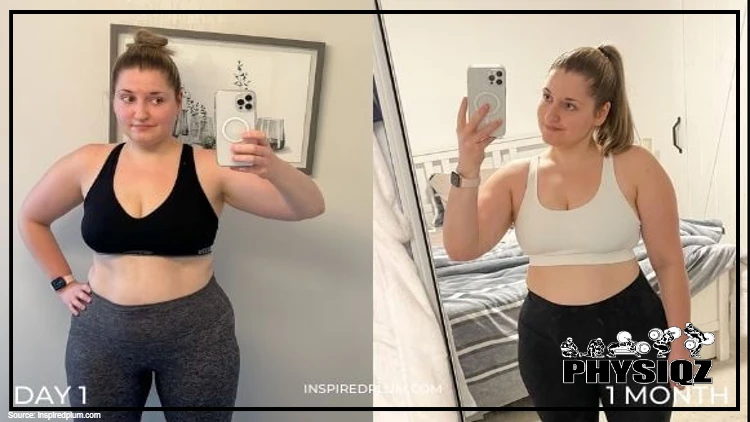
Results after just one month of consistent classes!18
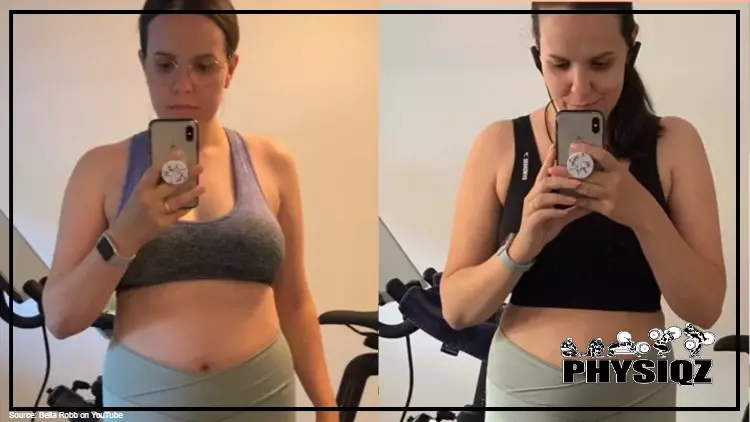
One Month Later and the Difference is Clear! Source: Bella Robb via Canva.com19
There are many reasons to try Peloton workout classes, such as spin class for intense cardio or strength programs for muscle building. And when it comes to the question, which muscles peloton targets, readers now know that nearly any muscle can be targeted through the plethora of programs Peloton offers.
Frequently Asked Questions
Should You Ride Peloton Everyday?
It can be hard coming up with the right Peloton workout plan. In general, classes can be done everyday, especially if many of the programs completed are low in intensity or cardio centric. People completing more intense peloton classes should make sure to give their bodies at least a couple of rest days per week to prevent injury from occurring.
How Often Should You Do Spin Class?
The answer to how often a person should complete a spin class will depend on length of time, intensity, and overall fitness goals. Spin classes focused on cardio can be completed up to six times a week, but higher intensity classes should be less frequent to allow the body to rest in between workouts. Research shows that just three classes per week of 1 hour each lead to improved physical fitness, more muscle, and less fat.
Does Peloton Tone Legs?
Fitness enthusiasts who are wanting to tone up their legs are in luck, because Peloton can significantly help tone the legs. This is because Peloton classes will aid in the burning of fat and strengthening of muscles. Both of which makes the muscles in the leg much more visible, creating a lean and toned look.
References
1Maridav. Canva. Accessed 19 April 2023. <https://www.canva.com/photos/MAEGIFbl1R8/>
2Bianco, A., Bellafiore, M., Battaglia, G., Paoli, A., Caramazza, G., Farina, F., & Palma, A. (2010). The effects of indoor cycling training in sedentary overweight women. The Journal of sports medicine and physical fitness, 50(2), 159–165. <https://pubmed.ncbi.nlm.nih.gov/20585293/>
3decade3d. Canva. Accessed 19 April 2023. <https://www.canva.com/photos/MADerAJvWMU-gluteus-maximus-anatomy-muscles/>
4decade3d. Canva. Accessed 19 April 2023. <https://www.canva.com/photos/MAC_U4VEw9o-glutes-medius-anatomy-muscles/>
5janulla. Canva. Accessed 19 April 2023. <https://www.canva.com/photos/MADE-Sq7uLk-quadriceps-female-anatomy/>
6decade3d. Canva. Accessed 19 April 2023. <https://www.canva.com/photos/MADerMxdfBI-hamstrings-anatomy-muscles/>
7decade3d. Canva. Accessed 19 April 2023. <https://www.canva.com/photos/MAC_U2yFahk-calves-anatomy-muscles/>
8decade3d. Canva. Accessed 19 April 2023. <https://www.canva.com/photos/MADerFwn3js-abs-anatomy-muscles/>
9Science Photo Library. “F017/1255.” Canva. Accessed 12 April 2023. <https://www.canva.com/photos/MADq3vbyn-k-f017-1255/>
10Science Photo Library. “The muscles involved in standing biceps curl. The stabilizing muscles are highlighted.” Canva. Accessed 12 April 2023. <https://www.canva.com/photos/MADmTGwAFbo-the-muscles-involved-in-standing-biceps-curl-the-stabilizing-muscles-are-highlighted-/>
11Hank Grebe. “Labeled Anatomy Chart of Shoulder, Elbow and Triceps Muscles in Skeleton on Black Background.” Canva. Accessed 12 April 2023. <https://www.canva.com/photos/MAEJnzTxmJU-labeled-anatomy-chart-of-shoulder-elbow-and-triceps-muscles-in-skeleton-on-black-background/>
12Maridav. Canva. Accessed 19 April 2023. <https://www.canva.com/photos/MAE1EdV2l9w-exercise-at-home-on-spin-bicycle-fitness-workout-with-screen-woman-training-on-stationary-bike-watching-online-video-class-for-exercising-cardio-/>
13Basso, J. C., McHale, A., Ende, V., Oberlin, D. J., & Suzuki, W. A. (2019). Brief, daily meditation enhances attention, memory, mood, and emotional regulation in non-experienced meditators. Behavioral brain research, 356, 208–220. <https://doi.org/10.1016/j.bbr.2018.08.023>
14Opplert, J., & Babault, N. (2018). Acute Effects of Dynamic Stretching on Muscle Flexibility and Performance: An Analysis of the Current Literature. Sports medicine (Auckland, N.Z.), 48(2), 299–325. <https://doi.org/10.1007/s40279-017-0797-9>
15Falcone, P. H., Tai, C. Y., Carson, L. R., Joy, J. M., Mosman, M. M., McCann, T. R., Crona, K. P., Kim, M. P., & Moon, J. R. (2015). Caloric expenditure of aerobic, resistance, or combined high-intensity interval training using a hydraulic resistance system in healthy men. Journal of strength and conditioning research, 29(3), 779–785. <https://doi.org/10.1519/JSC.0000000000000661>
16Chavarrias, M., Carlos-Vivas, J., Collado-Mateo, D., & Pérez-Gómez, J. (2019). Health Benefits of Indoor Cycling: A Systematic Review. Medicina (Kaunas, Lithuania), 55(8), 452. <https://doi.org/10.3390/medicina55080452>
17Yoon, J. G., Kim, S. H., & Rhyu, H. S. (2017). Effects of 16-week spinning and bicycle exercise on body composition, physical fitness and blood variables of middle school students. Journal of exercise rehabilitation, 13(4), 400–404. <https://doi.org/10.12965/jer.1735052.526>
18Peloton Weight Loss Journey: How I Lost 32 Pounds in 3 Months – Inspired Plum. (n.d.). Inspired Plum. Retrieved March 30, 2023, from <https://inspiredplum.com/peloton-weight-loss-journey/>
19“PELOTON BEFORE AND AFTER 6 MONTHS | Postpartum Weight Loss & Body Transformation.” YouTube, 28 February 2021. Accessed 19 April 2023. <https://www.youtube.com/watch?v=4Wke2ejIpQw>